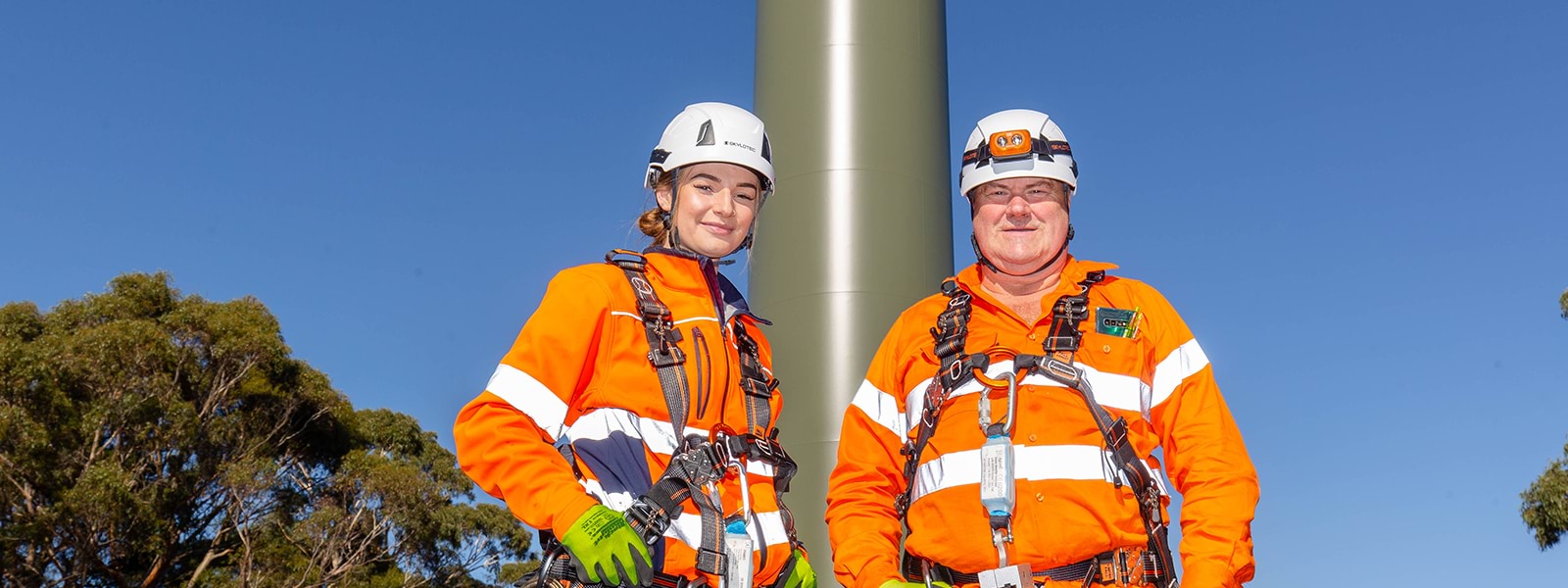Over the next three years, we will:
- Conduct an annual gender impact assessment of the implementation of the Skills Plan to inform subsequent skills plans and guide the sector.
- Monitor the education and employment outcomes of women who enrol in training.
- In partnership with providers, engage women from diverse backgrounds and report on perspectives and challenges associated with participation in education and training.
- Partner with other agencies to address localised barriers to both male and female participation in education and training and the labour force.
- Expand and further develop work with employers, their representatives and unions to raise awareness and collaborate on initiatives that increase both demand for female workers and the representation of women in non-traditional occupations, industries and management and leadership positions, and for males across the care economy occupations in significant demand.
Diversity in workforces means women are offered more opportunities for success in work and careers.
Since 2019, government funding for women in VET courses has outpaced funding for men – bucking a long-term gender bias towards men in VET.
Strong progress has also been made in attracting women into vocational education and training in areas of occupational demand, particularly through Free TAFE.
However, employment outcomes after training do not reflect these improvements in funding and participation.
Meeting workforce demand and addressing inequality will require more effort to attract women into the labour force and increase demand for female workers, particularly in industries and occupations where women are under-represented. It will also require action to support more males to move into traditionally female dominated occupations such as aged care and child care.
The skills system can support and encourage young women to prepare for jobs traditionally seen to be for men, and vice versa, and there is a significant role for the education and training sector, unions and governments to educate employers about the benefits of diverse and gender balanced workplaces.
For example, the most gendered industries – Healthcare and Community Services (women-dominated) and Construction (men-dominated) – have women’s workforce representation rates of 75 per cent and 12 per cent respectively. These differences are borne out in student choices in training.
The Government has formed partnerships with industry on several projects to attract and retain women into traditionally men-dominated trades.
Addressing inequality and lifting women’s participation goes beyond the education and training sector or employers. It includes eliminating violence against women and ensuring affordable and accessible childcare, transport and housing. These and other issues are being addressed through Safe and Strong: A Victorian Gender Equality Strategy, and the efforts of individuals and groups.
Victorian VET program enrolments by field of education and gender in 2020
| Sector | Women | Men |
|---|---|---|
| Education | 81% | 19% |
| Health* | 76% | 24% |
| Natural and physical sciences* | 71% | 29% |
| Society and culture | 65% | 35% |
| Food, hospitality and personal services | 61% | 39% |
| Management and commerce* | 56% | 44% |
| Mixed field programmes | 51% | 49% |
| Creative arts* | 50% | 50% |
| Agriculture, environmental and related studies | 35% | 65% |
| Information technology | 19% | 81% |
| Engineering and related technologies | 11% | 89% |
| Architecture and building | 8% | 92% |
* When asked about their gender identify, at least 1% of enrollees in this field of education responded other/unknown.
Case study
Changing course: from beauty therapy to plumbing
Working as a qualified beauty therapist was not giving Breanna Szitarity the stimulation she craved. Needing a new challenge, the then-21-year-old decided to take an entirely new career path as a plumber.
Breanna signed up for a Certificate III in Plumbing through the Master Plumbers’ Association – Plumbing Apprenticeships Victoria – and has never looked back.
Breanna immersed herself in learning at Box Hill Institute and was rewarded by finishing her apprenticeship six months early.
Breanna said the apprenticeship taught her resilience and how to think outside the box to solve problems. “During my apprenticeship, the level of responsibility rose. I learnt resilience and problem-solving skills,” she said.
Today, Breanna runs her own business. “I’m happy to have found plumbing and I’m a big advocate to encourage women into trades,” she said.
Updated
